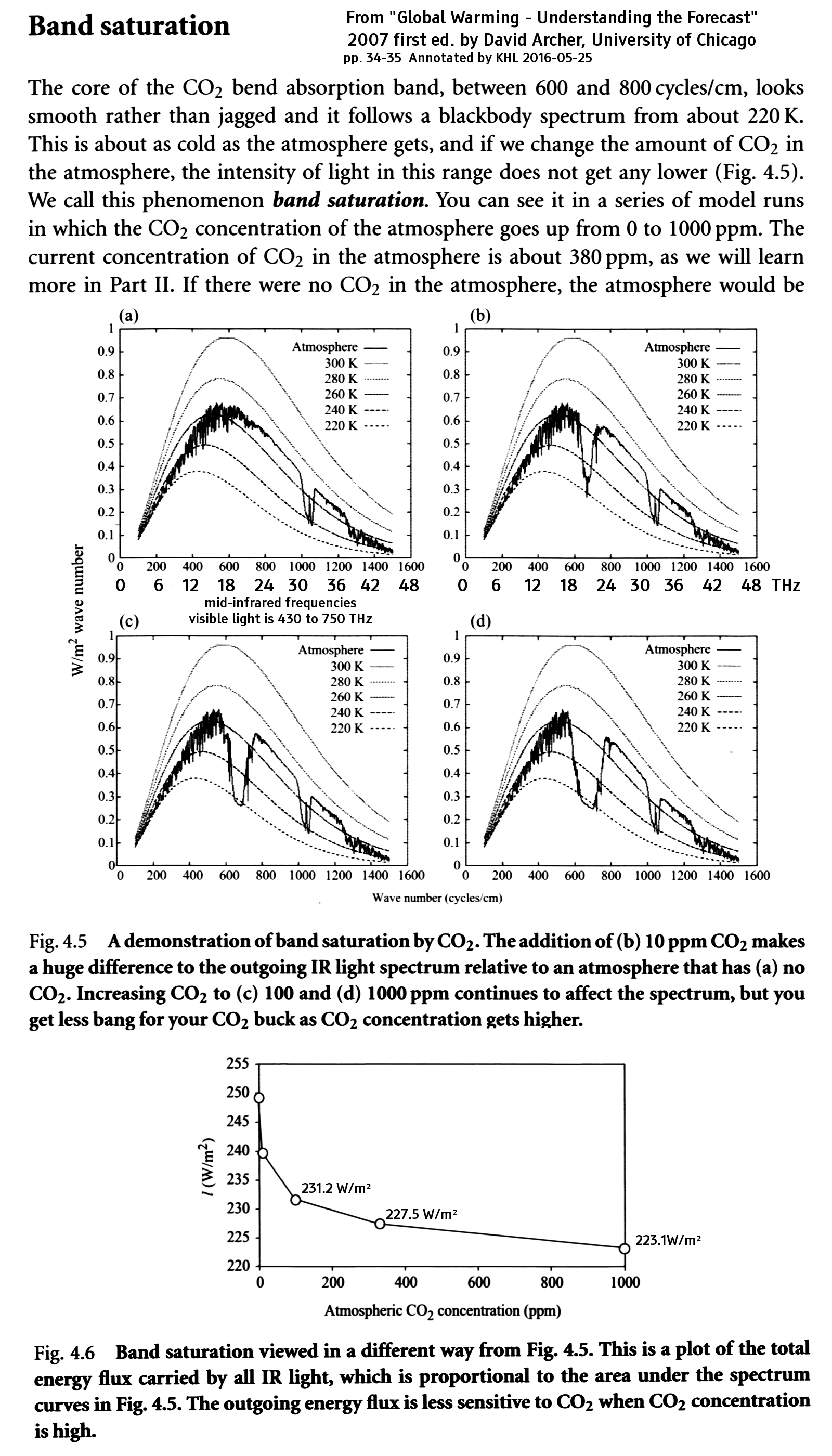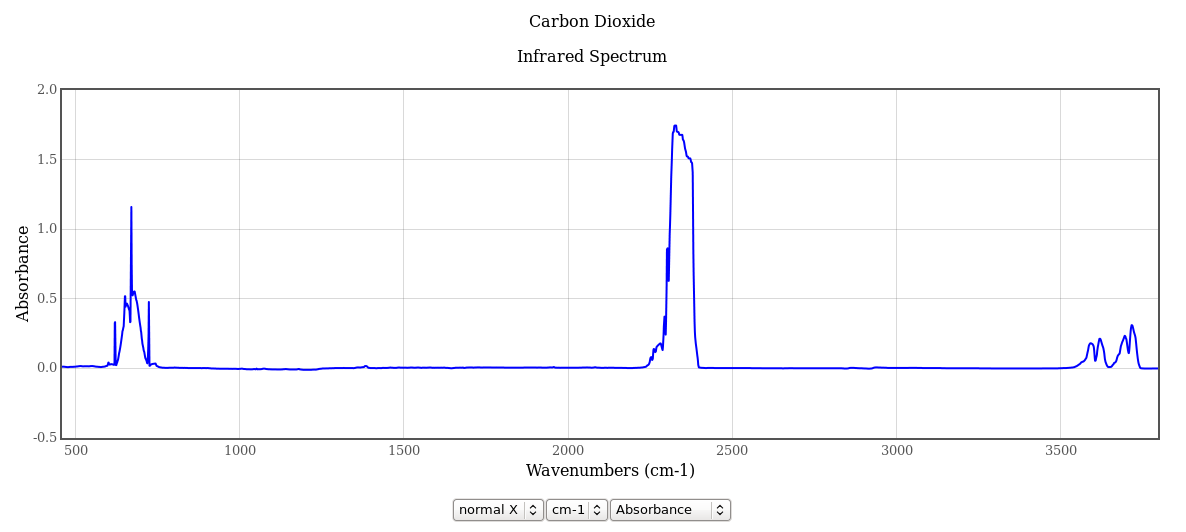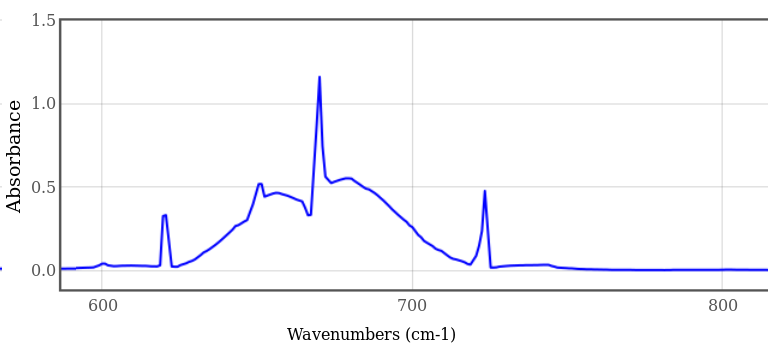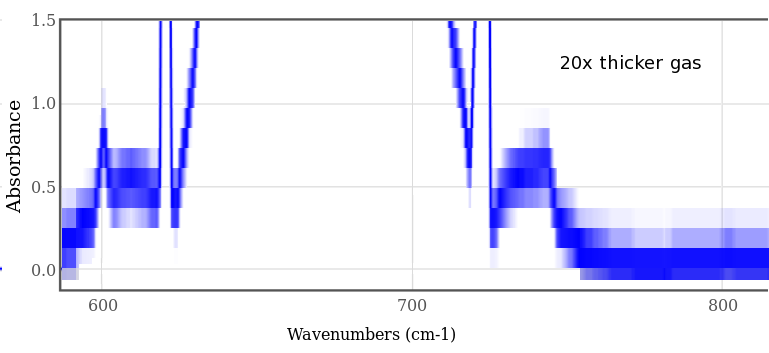CO₂ Spectrum
From Global Warming, Understanding The Forecast by David Archer, Blackwell 2007, without permission. Buy the book for a lucid explanation of the science; perhaps the author and publisher might forgive me for posting the excerpt below.
I don't understand cycles/cm very well. The speed of light is 3e10 cm/s, so multiply 600 to 800 cycles/cm to get 18 to 24 THz.

Here's the CO₂ absorbance spectrum from NIST: ( http://webbook.nist.gov/cgi/cbook.cgi?ID=C124389&Type=IR-SPEC&Index=1#IR-SPEC )

This first graph shows absorbance out to 3700 cycles/cm ( about 110 THz ).
Absorbance is the common logarithm of the incident to transmitted radiation, so an absorbance of 1.7 (like the center of the 2300 cycles/cm peak) means an attenuation by a factor of 101.7 or 50. If the gas layer is twice as dense or twice as thick as the sample measured here (see the notes for the NIST web page), the attenuation is 103.4 or 2500. If the absorbance is precisely zero, the attenuation is zero even for an infinitely thick sample.
The strongest and broadest peak is at 2300 cycles/cm (about 70 THz), but this peak is irrelevant; The Earth is 220K to 300K (depending on where you look) so this is well above the earth's black body emission peaks (400 to 600 cycles/cm), in the quantum-limited exponential rolloff region. It is also well below the sun's black body emission peak of 11,300 cycles/cm at 5780 K. The peak that matters to us is within the 100 to 1500 cycles/cm window, shown below.

The interesting aspect of this peak is that it is broad, not sharp, with long tapering tails to the side. Since this is logarithmic, there is no place where the sample is perfectly absorptive; however, it is "more absorptive than transmissive" where the graph is greater than 0.3 ( approximately log(2) ). Double the thickness, double the attenuation of the tails, and more of the spectrum (after doubling) is greater than 0.3.

If the gas sample is 20 times thicker (or denser), even more of the spectrum is absortive.
